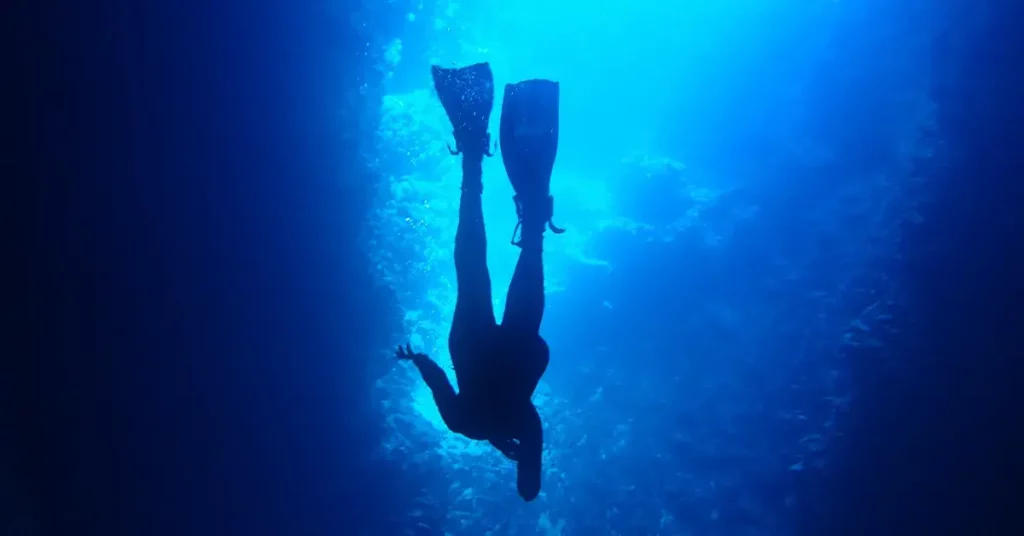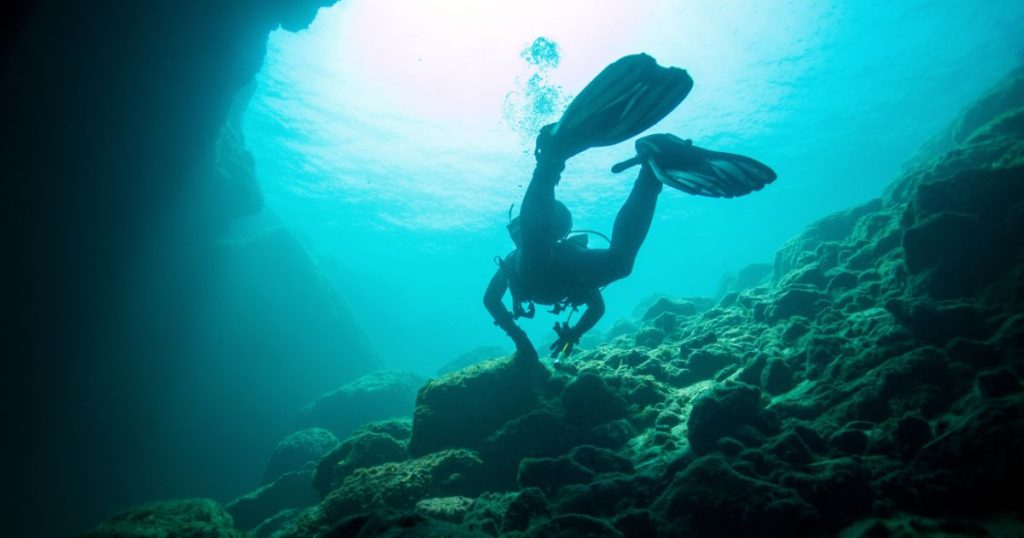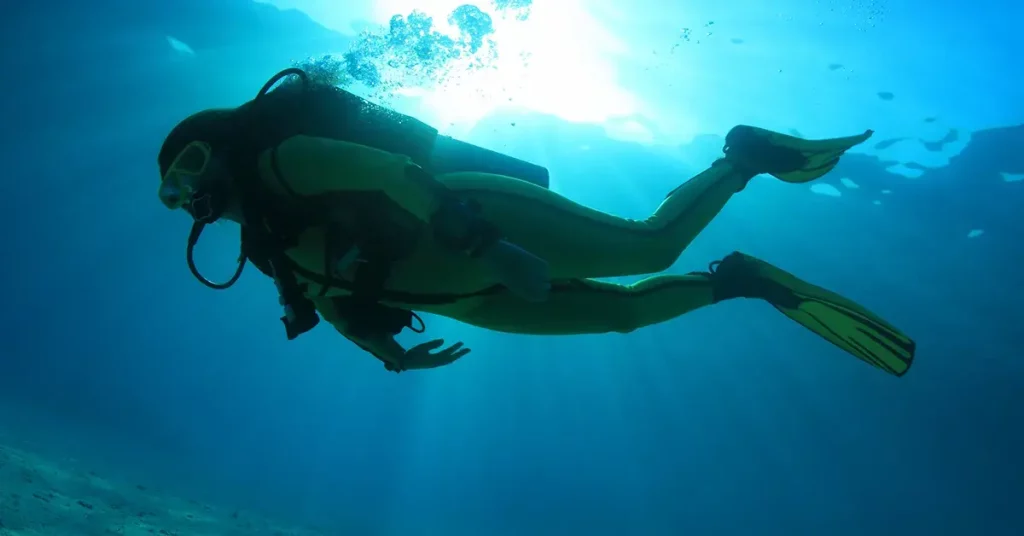Have you ever wondered “How deep can a human dive?” Both experienced divers and curious observers often wonder the maximum depth a human body can reach underwater.
The answer to this common question is not black and white. It depends on the type of diving, equipment used, experience and personal tolerance.
The definition of a deep dive according to PADI is any dive exceeding 18 meters (60 feet). While that may seem fairly deep, our bodies are capable of diving to far greater depths. Expert freedivers can exceed 400 feet on a single breath, while specialized equipment allows scuba divers to exceed 1000 feet.
What Happens to Your Body When You Dive?
When you dive and swim underwater, your body goes through some interesting changes. Your heart rate lowers as the cold water stimulates receptors in your skin, slowing down breathing and heart rate while oxygen is conserved. This can cause what’s known as an ‘aquatic high’, a feeling of euphoria and tranquility from the endorphin release in response to lowered heart rate.
Adrenaline then kicks in when needed for a burst of energy, before returning to a relaxed state until it’s triggered again by physical activity or sudden movement. Diving also increases blood oxygen levels that last after resurfacing, resulting in increased alertness and performance in cognitive tasks like problem solving or recall.
Finally, our lungs expel carbon dioxide faster underwater resulting in better air exchange with more oxygen taken into the bloodstream for greater energy output on land.
How Deep Can a Human Dive Without Scuba Gear (Freedive)?
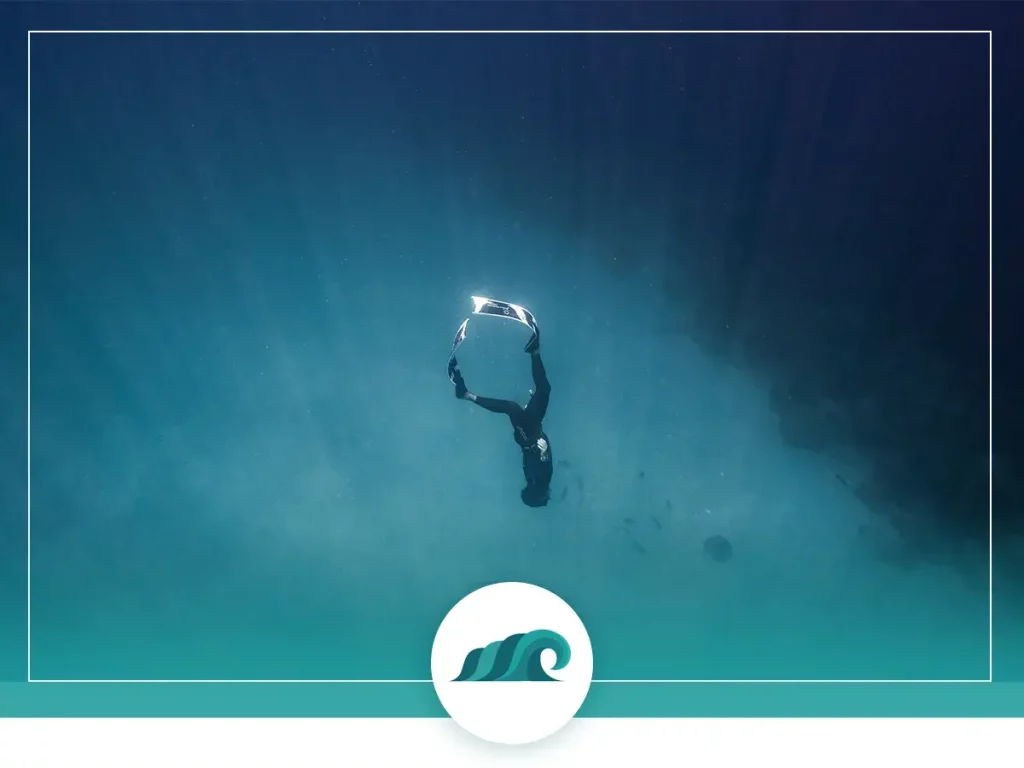
For a species of land-dwelling primates, humans make surprisingly good divers. Many people are shocked when they discover that freedivers can descend hundreds of feet below the surface on a single breath.
Due to an ancient diving reflex known as the mammalian diving reflex, we’re able to optimize our biology for maximum efficiency during a dive. The reflex is triggered by wetting our nostrils and holding our breath.
This reflex causes several major changes in our bodies:
- Bradycardia is the slowing of the heart rate in response to cold water and breath-holding. The heartbeat slows down by 10 – 25 percent. In experienced divers, it can reduce by over 50 percent.
- Peripheral vasoconstriction is when blood vessels in the extremities constrict, moving blood from the limbs to oxygen-sensitive organs like the heart, lungs, and brain.
- Blood shift is related to peripheral vasoconstriction. During deep dives, our lungs compress from the excess pressure. This causes a blood shift to the vessels inside the lungs – which expand with blood to compensate.
Freediving (often called “apnea”) has been practiced for thousands of years throughout the globe. No one really knows the maximum depth a person has achieved, but we know the freediving records from the last century or so. We also have a rough idea of the theoretical maximum depth a person could achieve without scuba gear.
Freediving Depth Records
Competitive freedivers compete in a variety of different disciplines. From constant weight apnea, where divers propel themselves to the bottom without touching the rope or dropping their weights, to no-limits apnea, in which divers utilize high-speed dive sleds and inflatable balloons to help them descend and ascent rapidly. There are also a variety of sub-disciplines – both with and without diving fins and dive weights.
The world record for no-limits apnea is currently held by Herbert Nitsch. In 2007 he dove to an incredible 214 meters (702 feet). Then in 2012 he broke his own record, diving to 253 meters (831 feet), but injuring himself in the process.
The constant weight apnea word record is currently held by Alexey Molchanov (130 meters) for men and Alessia Zecchini (107 meters) for women.
The theoretical maximum a human could freedive is not that clear-cut. In the early 20th century, scientists were convinced that diving beyond 30 meters (100 feet) would cause our lungs to rupture, leading to certain death. Nowadays, freedivers can exceed 4 times that depth without assistance.
The limiting factor for freediving appears to be the pressure exerted on the lungs at extreme depths. Even though our bodies have adaptations to slow down the heart and shift blood into the lung tissues, at a certain point the pressure can be too much for the body to handle. The limit seems to be somewhere around 1000 feet, but that’s just an estimate, and could one day be proven wrong.
How Deep Can a Human Dive with Scuba Gear?
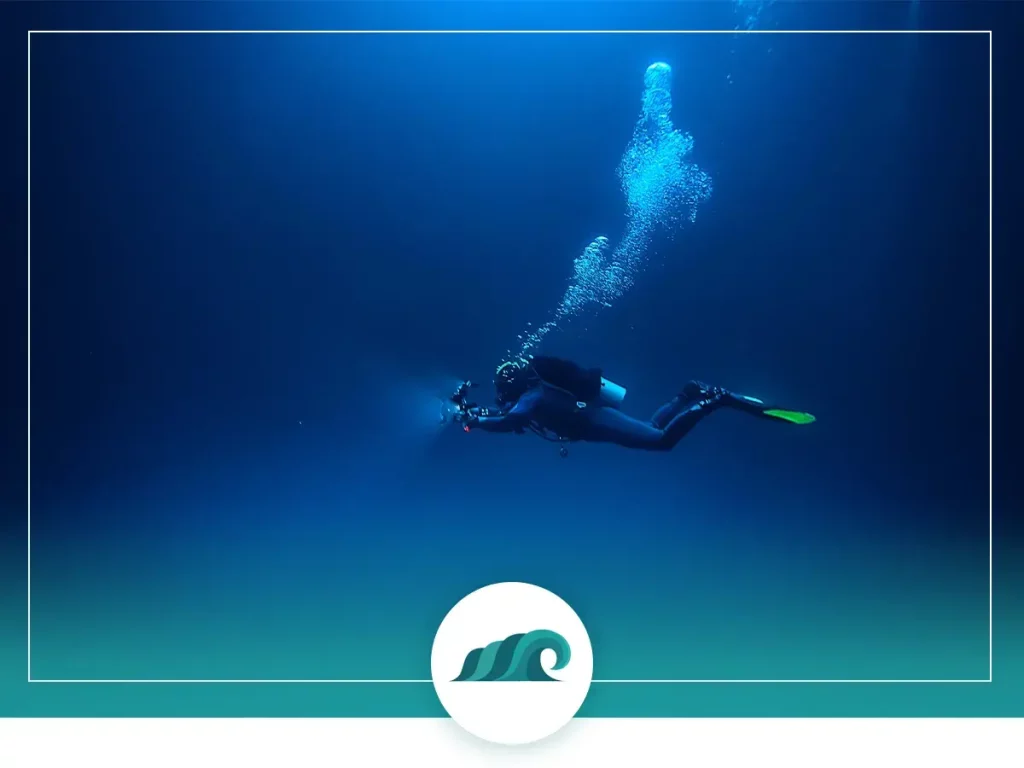
The current record for the deepest scuba dive is held by Egypt’s Ahmed Gabr. In 2014 he dove 1090 feet (332 meters) below the ocean surface near Dahab, Egypt. It took him just 15 minutes to reach the record depth and another 14 hours to get back to the surface due to scheduled decompression stops.
There are a number of factors limiting the depth scuba divers can safely dive to:
Nitrogen Narcosis
Nitrogen Narcosis is an altered state of consciousness that occurs when breathing compressed gasses at depth. For many people, the effect is similar to alcohol intoxication. It’s usually not noticeable in shallow dives but becomes a factor after 30 meters (100 feet).
Narcosis is not dangerous by itself, but it can lead to impaired decision making and focus. The effects wear off after ascending to a shallower depth and cause no long term damage.
In order to combat the effects of nitrogen narcosis in deep dives, divers utilize specialized breathing gasses called Trimix and Heliox. These mixtures contain helium, which offsets some of the narcotic effects of nitrogen at depth.
Oxygen Toxicity
Oxygen Toxicity results from breathing high concentrations of oxygen below a certain depth. It can lead to seizures and drowning. In recreational scuba diving, divers typically don’t exceed 130 feet, which is not deep enough for it to be an issue.
Below 60 meters (197 feet) the risks of toxicity are elevated. In order to combat this, deep divers utilize specialized gas mixtures with lower concentrations of oxygen.
High pressure nervous syndrome
High pressure nervous syndrome (HPNS) is a neurological condition that occurs during extremely deep dives while breathing helium gas. It causes tremors, muscle twitching, fatigue, and dizziness. It’s caused by the speed of descent as well as the absolute pressure at depths below 500 feet.
In order to combat HPNS deep divers utilize a slower rate of compression (descent), as well as gas mixtures which include nitrogen and hydrogen. HPNS seems to be the limiting factor for how deep divers can go, as it can’t be completely prevented.
Decompression sickness
Decompression sickness (also called ‘the bends’) is always a consideration when scuba diving, however, it’s greatly increased in deeper dives.
The time a diver can stay below the water without decompression stops is known as the no-decompression limit. The deeper you dive, the shorter the no-decompression limit. Deep diving requires many long decompression stops during the ascent, which increases the risks of something going wrong. It also means a diver cannot make an emergency ascent without risking decompression sickness.
Air consumption
Air consumption is also greatly increased during deep scuba dives. The deeper you dive, the higher your breathing gas consumption will be. This means deep dives require serious logistical planning to ensure breathing gas supplies are adequate.
Other Diving Methods
While traditional scuba diving might be limited, there are other types of diving that are able to exceed these limits.
Saturation diving is where divers live in a pressurized underwater habitat for a long period of time, which allows them to acclimate to the high pressure. This type of diving is used in commercial offshore drilling, as well as for research and exploration. The saturation diving record is 534 meters (1752 feet) by French underwater exploration firm Comex S.A.
Saturation diving is stunningly exhibited in James Cameron’s 1989 film The Abyss, where a team of divers living in an underwater habitat faces severe circumstances.
Atmospheric diving suits are hard-shelled diving suits capable of taking a human up to 2,300 feet (700 meters) below the surface. Because they are fully enclosed systems, the diver doesn’t need to decompress or use special breathing gasses. The drawback is they’re bulky, expensive and awkward to use.
Versions of these suits have been in use for hundreds of years and are often used in salvage operations.
Liquid breathing is a semi-theoretical way for divers to descend to extreme depths. While breathing gasses compress under pressure, oxygenated breathing liquid will not compress. Theoretically, this could allow divers to descend indefinitely.
This was also beautifully illustrated by Ed Harris’s character in The Abyss.
While the technology is not yet ready for deep sea diving, liquid breathing has been successfully tested on animals. In 2018 Russian scientists successfully tested liquid breathing on a dog diving to 500 meters (1,640 feet).
How Deep Can a Submarine Go?
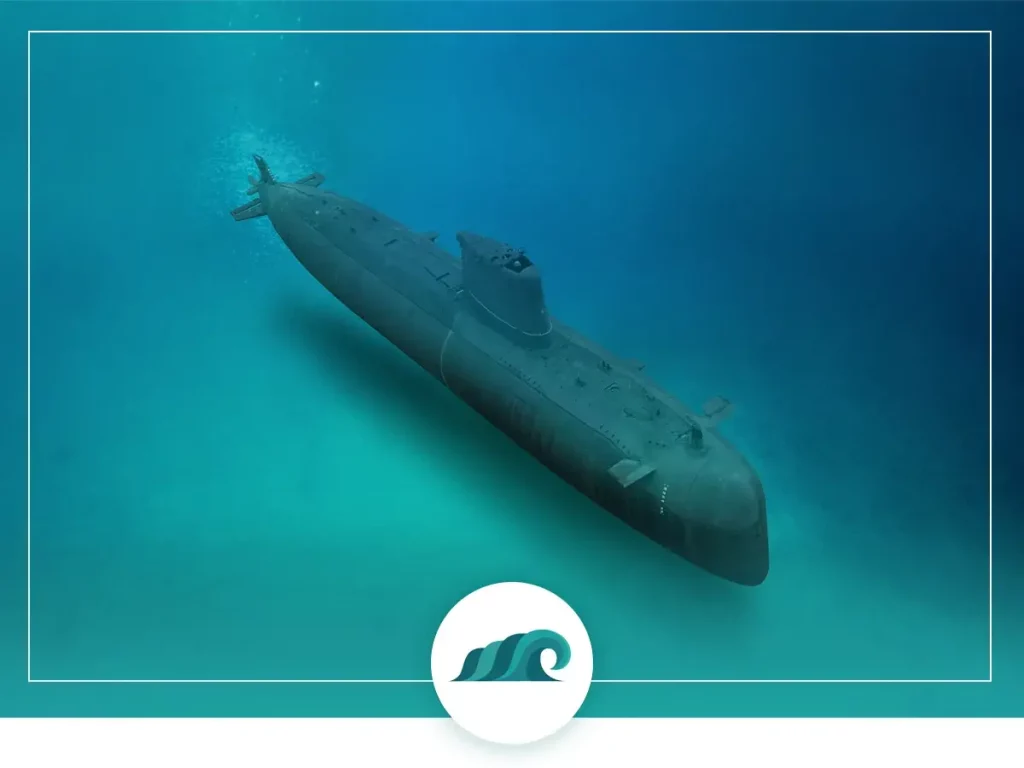
The two deepest manned submarine dives ever recorded were both to the bottom of the Challenger Deep at the southern end of the Marina Trench. This is the deepest underwater point on earth, at nearly 7 miles (11 Km) deep.
The first submersible to reach this depth was the Trieste in January 1960. Piloted by Swiss oceanographer Jacques Picard and US Navy Lieutenant Don Walsh, the Trieste spent only 20 minutes on the ocean floor because of concern over a crack in the outer window.
The second submersible to descend to the bottom of the Challenger Deep was James Cameron’s solo submersible, the Deepsea Challenger in 2012. The entire voyage is chronicled in Cameron’s excellent 2014 documentary Deepsea Challenge. Cameron spent 2 hours and 34 minutes on the ocean floor before ascending.
How Deep Can a Human Dive Before Being Crushed?
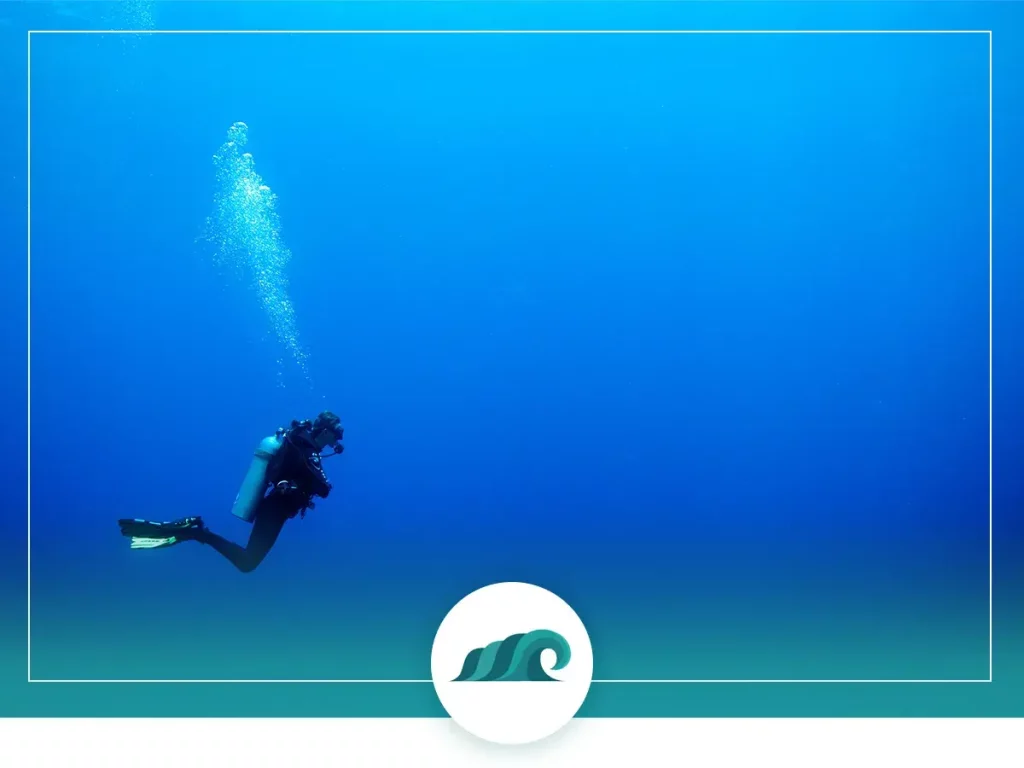
Being “crushed” underwater is not a serious concern for divers.
The human body is able to withstand an incredible amount of pressure. There are several other dangers that would kill you far before the pressure would become dangerous.
The major concerns for scuba divers are decompression sickness, narcosis, oxygen toxicity, and high-pressure nervous syndrome.
For freedivers, the main dangers of deep diving are shallow water blackouts, lung collapse, and decompression sickness.
What are the Risks of Diving Too Deep?
Nitrogen Narcosis
Even the most seasoned divers may feel the effects of nitrogen narcosis when going deeper than 30 meters. This condition can cause divers to experience decreased capacity for sound judgment, dementia-like symptoms and psychological effects, making them feel drunk or stoned.
Although nitrogen narcosis is not life-threatening, it can lead to dangerous behaviors such as removal of diving equipment or ignoring safety protocols. As such, professional divers must use extra caution and slowly ascend if they start to feel any unusual changes in behavior.
Decompression Sickness
One of the most dangerous risks associated with deep diving is decompression sickness, which is also referred to as ‘the bends’. This is caused by a dive being too long or when the diver ascends too quickly and gasses such as nitrogen expand to form bubbles in the bloodstream. This can lead to problems ranging from joint pain and skin rashes to paralysis and potentially fatal heart or neurological issues.
To reduce this risk, divers must always adhere to decompression stop schedules that vary depending on depth, water temperature and other factors.
Oxygen Toxicity
Oxygen toxicity is one of the biggest risks associated with descending beyond certain depths; it occurs when the concentration of oxygen entering a diver’s body is too great. The result can be dizziness, nausea, confusion and unconsciousness and even death if not managed properly.
To limit the risk, divers must keep track of their depth and adhere to strict decompression parameters set by their dive instructor or dive computer to maintain safe levels of nitrogen in the blood. Taking frequent stops on ascent further reduces the risk posed by oxygen toxicity.
So, How Deep Can You Dive?
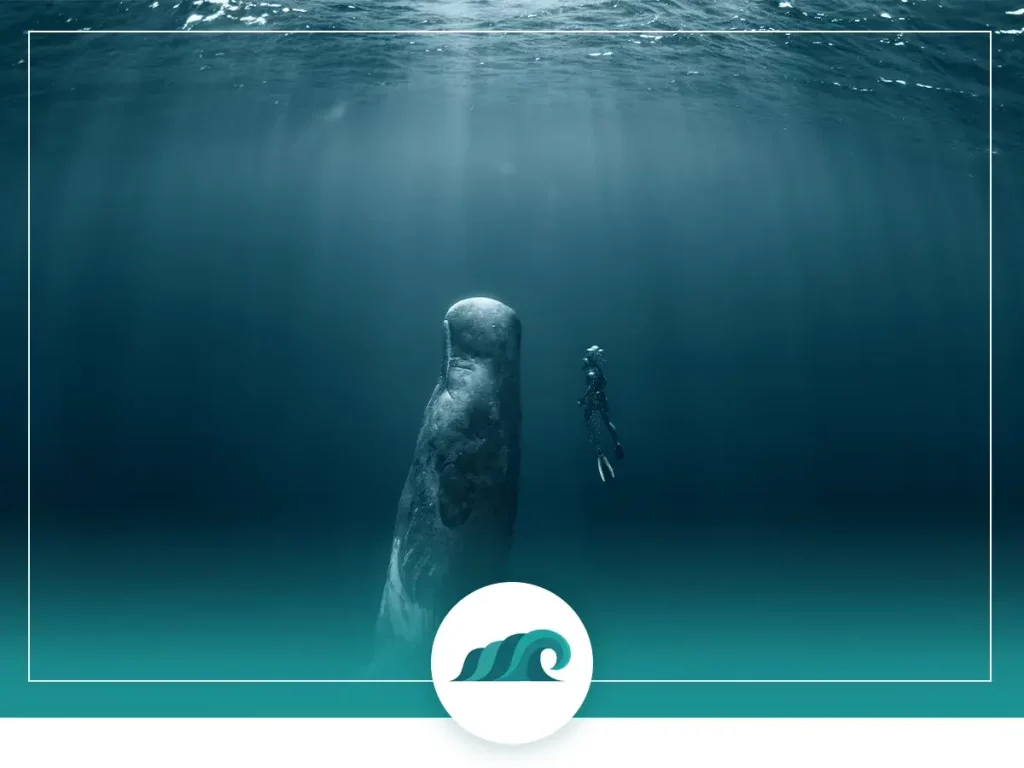
The answer to “How deep can a human dive?” will depend on the type of diving, experience level and training.
Most scuba diving organizations recommend recreational divers not exceed 130 feet (40 meters) deep. Staying within these limits ensures you don’t get in over your head. For deeper dives, specialized training is required to learn decompression techniques and Trimix usage.
Freedivers don’t have a hard and fast rule for maximum depth, but you should always dive within your limits. Never push yourself beyond your comfort zone – always err on the side of caution. Displaying a clearly visible dive float and flag is another way to ensure your safety while diving.
FAQ
How long can an average person hold their breath?
Though some individuals are able to extend their breath-holding capability to 10 minutes and more, the average time range is between three and five minutes. Of course, the duration of one’s breath-hold depends on various factors like age, lung capacity, sex, and physical fitness level.
What is the deepest dive without oxygen?
Herbert Nitsch holds the record for the deepest dive without oxygen at an astounding 702 feet. This remarkable feat was achieved in 2007 and remains unchallenged since then. It is quite a feat to achieve such depths without any aid of oxygen, which most people rely on to breathe underwater. Despite his achievement, Herbert Nitsch still strives to break his own record and continues training rigorously to this day.

